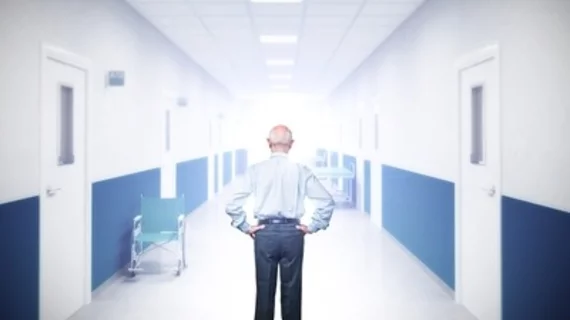Early discharge after TAVR reduces readmissions
Early discharge (ED) following TAVR is associated with fewer readmissions and similar mortality over the following 30 days compared with a standard discharge strategy, according to a meta-analysis published in JACC: Cardiovascular Interventions.
“These data support the safety of programs aiming an ED pathway in selected TAVR patients,” wrote lead author Rafail A. Kotronias, MBChB, MSc, and colleagues. “Institutional protocols with the input from different members of the multidisciplinary heart team should be devised to optimize discharge processes to improve health care resource utilization.”
The researchers included eight studies encompassing 1,775 participants, including 642 who underwent TAVR with an early discharge strategy (discharge within three days). Mortality from discharge to 30 days was 35 percent lower in the early discharge group, but that difference wasn’t statistically significant.
“Our confidence in estimates was very low, owing to indirectness, imprecision, risk of bias due to the observational nature of the studies, and potential selective reporting of outcomes,” the authors acknowledged.
However, the 37 percent lower risk of readmission within 30 days for patients discharged early was found to be statistically significant.
“This is in line with a recently published analysis of the U.S. National Readmissions Database suggesting that prolonged stay after TAVR was independently associated with 30-day readmissions,” Kotronias et al. wrote. “This effect may be partially explained by a higher comorbidity burden, but also by the increasing incidence of health care-associated infections per day of stay.”
The authors pointed out 13 percent of readmissions after TAVR—and 18 to 30 percent of 30-days mortality—have been attributed to infections. Therefore, reducing hospital-acquired infections could be a key benefit of early discharge.
Kotronias and colleagues offered a specific pathway for early discharge. During pre-procedural planning, the clinicians must determine if the patient has the appropriate biological and functional factors, as well as the social support, to facilitate an early discharge.
If that’s the case, a minimalist approach including transfemoral access, transthoracic echocardiography and conscious sedation and local anesthesia may be used. Then, if the patient returns to their baseline functional status and is deemed to have adequate early discharge planning and family involvement, they can be sent home—provided there are no vascular or bleeding complications or conduction abnormalities.
“Especially in the elderly and fragile population, performing TAVR in awake patients, enabling rapid mobilization and discharge, is of value to prevent complications such as delirium and infections, but obviously only if safe,” wrote Jan Baan Jr., MD, and Jeroen Vendrik, MD—both with the Academic Medical Center in Amsterdam—in a related editorial. “The study of Kotronias et al. reassures us of this safety and shows the ability of treating physicians to select patients who can be safely discharged early post-procedurally.”
Kotronias and coauthors acknowledged patients in the early discharge protocol are highly selected and likely to be at lower risk, although their mean Society of Thoracic Surgeons risk score was about 6 percent in the pooled analysis. Faster discharge may have also been achieved more often by experienced care teams, which could influence outcomes.
In addition, there was “marked variability” in different institutions’ discharge protocols, although ED pathways typically involved the “introduction of a minimalist approach, early stepdown, early ambulation, and resumption of self-caring activities.”
“It is unlikely that (best practice) will be defined by future randomized controlled trials, and thus, the current study represents an important synthesis of available evidence,” the researchers wrote.
As TAVR outcomes continue to improve with new technologies, more clinical experience and its increasing use in lower-risk patients, Baan and Vendrik predict minimalist strategies will become more popular—resulting in better patient outcomes and lower healthcare costs.

